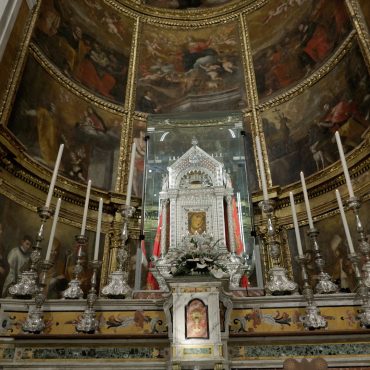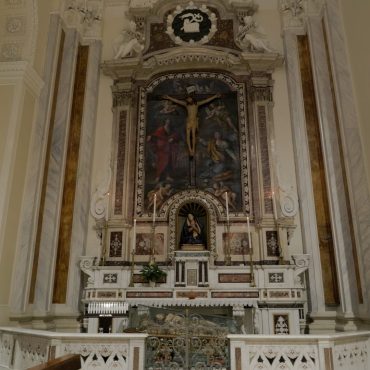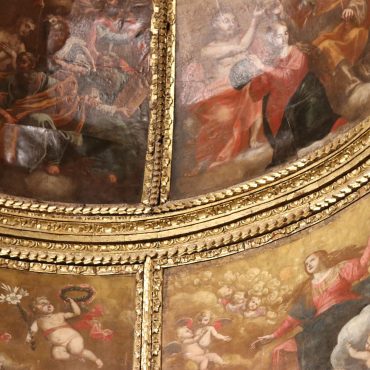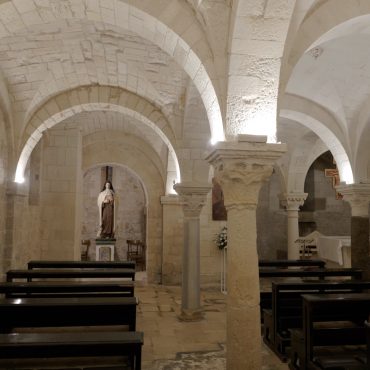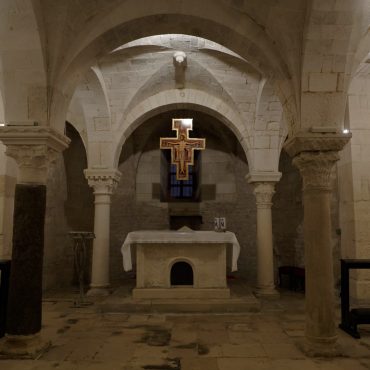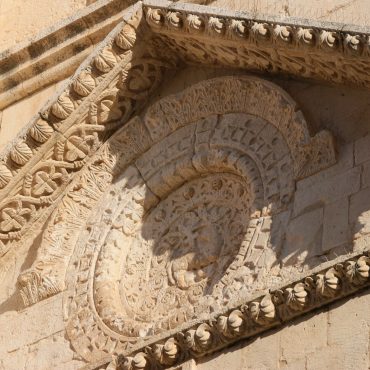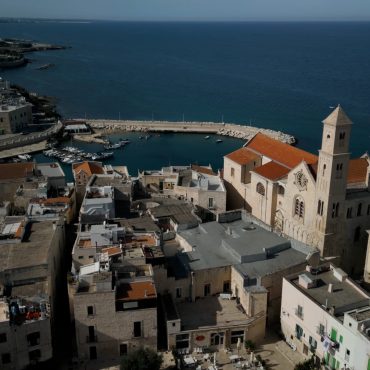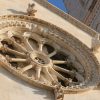
Cathedral and crypt
(12th-18th century)
In the heart of the Middle Ages European cities were animated by great artistic zeal and, driven by a sense of deep faith, communities began to built important cathedrals which rose high into the sky as eternal symbols of power and devotion. In the first three centuries of the second millennium grand cathedrals were built, first in an austere and solemn romanic style with solid forms and simple lines later giving way to a more complex gothic style which produced buildings that towered high in the sky, towards God.
In this fascinating context, one of the first cathedrals to be built was in Giovinazzo. In 1113 Costanza d’Altavilla, widow of Prince Boemondo of Giovinazzo, decided to leave a permanent mark on the history of her land and commissioned the cathedral, not just as a place of worship but as a sign of the power and devotion of her dynasty. The cathedral began to take form on the clifftop, embraced by the waves of the Adriatic sea.
The cathedral was built in a romanic-pugliese style, a perfect example of the culture of medieval Puglia which presented a combination of Byzantine and Arabic influences, reflected in the details and shape of the church. In the following centuries changes were made which altered its original character but the cathedral of Giovinazzo still preserves its essence.
To walk through the door is to go back in time; the severe lines of the exterior give way to a triumph of baroque stucco decorations which enrapture the gaze in an embrace of beauty and spirituality. Among all the marvels to be admired inside the cathedral, one in particular grabs the attention and veneration of visitors: the cedar wood Byzantine icon depicting the Virgin Mary with Child, known as the “Madonna di Corsignano”. This sacred image of the patron saint of Giovinazzo is much more than a work of art, it is a symbol of maternal protection and hope for the entire community. It is placed in the apse which is adorned by extraordinary paintings by Carlo Rosa dating back to 1676 and the icon dominates the space with its silent and powerful presence, inviting reflection and prayer.
The crypt is situated under the cathedral and was completed in 1150. It is a place of great fascination and spirituality and is known by the people of Giovinazzo as “purgatorio” or “confessione”. In this silent space the tombstones and columns dating back to various periods tell of burial and purification. The fifteen cross vaults that make up the crypt are supported by ten columns, some of which dating back to Roman times, others added later in a continuing process of transformation reflecting the passage of time. The medieval capitals, despite being damaged by baroque restoration work still conserve traces of their original beauty while the keystones of the cross vaults have floral motives evocative of an artistic past which still surprises.
At the centre of the crypt the altar of the protomartyrs once held the relics of the first christian martyrs. Past and present intertwine in an atmosphere of mystery where the faith of centuries continues to inspire, just like the cathedral which rises above, protected by the sea.


